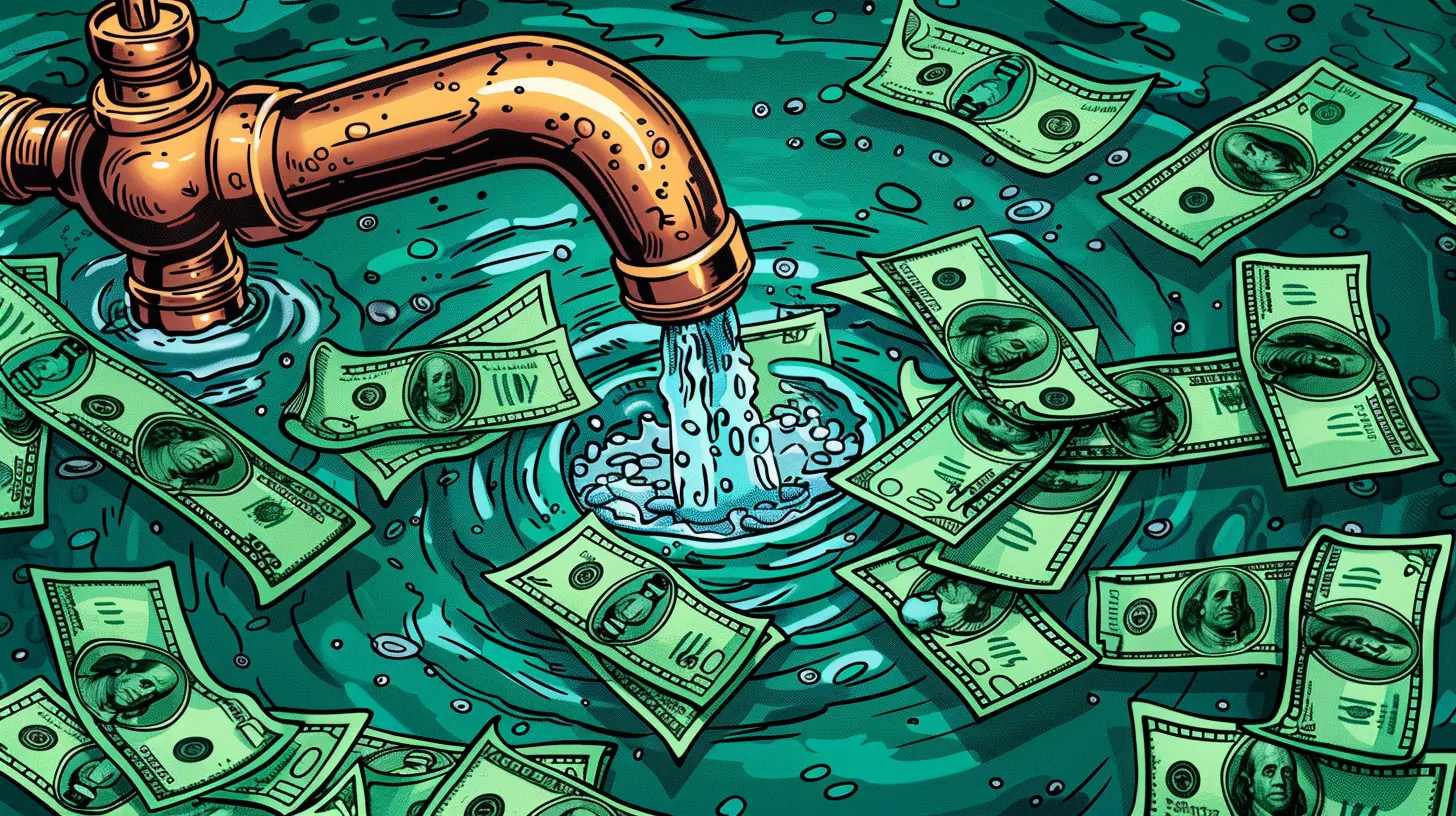How to Use Cash Flow Statements to Make Better Business Decisions
3 July 2025
So you’ve heard the term “cash flow statement” thrown around at business meetings, in finance podcasts, or maybe it's staring back at you from that accounting software you pay for (but barely open). Sound familiar?
You’re not alone.
Cash flow statements might not be the flashiest financial documents—no wild colors, no pie charts (unless you’re feeling fancy and make one yourself)—but oh boy, are they important. They’re like the GPS for your business finances. Want to know where your money is going, whether you can afford that new hire, or if it’s a good time to invest in new equipment? It all starts right here.
In this article, we’re diving deep—yet keeping it light and breezy—into how you can use a cash flow statement to make smarter, more confident business decisions.
Let’s roll up those sleeves and unravel the mystery!
🌟 What Even is a Cash Flow Statement?
Okay, let’s break it down.A cash flow statement (a.k.a. a statement of cash flows) is a financial report that shows how much cash comes in and goes out of your business over a specific period—monthly, quarterly, or yearly.
Not profits. Not revenues. Just good ol’ cash. Cold, hard, real-deal money.
While your income statement tells you how much you earned and the balance sheet lists what you own and owe, the cash flow statement zooms in to show exactly where your cash is coming from and where it’s going.
Think of it as the heartbeat of your business's financial health.
💸 Why Should You Care About Cash Flow?
This is the million-dollar question (sometimes, literally).You could have impressive revenue numbers and still not have enough cash to pay your bills. That’s not just an accounting hiccup—it’s a one-way ticket to “Closed Down-ville.”
Here’s what tracking your cash flow helps you:
- Stay solvent (aka not running out of money)
- Time your expenses better
- Prepare for growth
- Avoid nasty surprises like bounced payments
- Convince investors or lenders you’re worth their money
In a nutshell, managing cash flow is business survival 101.
🔍 The Three Sections of a Cash Flow Statement
Before we get into how to use it for making business decisions, let’s understand its three parts.1. Operating Activities
This section is all about the day-to-day. It includes:- Cash received from customers
- Cash paid to suppliers
- Wages
- Rent
- Utilities
If your business were a car, this is the fuel you need to keep it running. Positive cash flow here = healthy business operations. Negative? Time to reevaluate.
2. Investing Activities
This covers money spent or earned from buying/selling long-term assets:- Purchasing equipment
- Selling property
- Investments in other businesses
Investing cash flow might be negative if you're making big purchases—which isn’t necessarily bad. It might mean you’re gearing up for growth!
3. Financing Activities
Financing is all about how your business is funded:- Loans
- Equity investments
- Dividends paid
- Repaying debt
Here, you're either getting money from outside your business or paying it back.
🧠 Using Cash Flow Statements to Make Better Business Decisions
Now to the exciting part! Let me walk you through how you can actually use this black-and-white document to make powerful, money-smart decisions.🧾 1. Know When You Can Afford to Spend
We all get tempted to invest in that shiny new software, hire additional staff, or stock up on inventory. But is it the right time?By checking your cash from operating activities, you’ll see exactly how much you’re actually making from your core business.
👉 If your operating cash flow is consistently positive, it’s a green light.
👉 If it's dipping into the negative, maybe hold off. It’s like spending your rent money on a vacation—tempting, but risky.
📈 2. Spot Trends Before They Become Problems
Cash doesn’t just disappear like a magician’s trick (unless you've got some shady accounting going on). Use your statement to spot patterns.- Are expenses rising faster than income?
- Is customer payment lag increasing?
- Are you spending more on supplies but not seeing sales go up?
Cash flow statements give you early warning signs. Think of them like your business’s personal weather forecast. Storm coming? Grab an umbrella.
🛠 3. Prepare for Expansion
Thinking of launching a new product line, opening a new location, or scaling up?This is where cash flow from investing activities is crucial. You can see what money you’ve put into assets and if it's paying off.
You might be spending now, but if your operating income is solid, and you’re not bleeding dry, it’s probably a good time to grow.
No guesswork involved—just clear, straightforward math.
🏦 4. Evaluate Loan Readiness (or Repayment Ability)
If you're planning to take on a business loan (or need to reassure your existing lender), your cash flow statement is your best friend.Lenders love seeing:
- Stable or positive operating cash flow
- Moderate, manageable financing activity
- Loan repayments that don’t kill your cash position
You can use the financing section to assess how much room you’ve got to maneuver financially.
Don’t want to be caught short? Always double-check here.
🤝 5. Impress Investors and Stakeholders
Potential investors or partners don’t want to hear vague promises of profitability. They want proof you can manage your cash.Showing a healthy, predictable cash flow statement tells them:
✅ You’re organized
✅ You’re transparent
✅ You know how to run the ship
Think of it as handing over a financial resume. It’s hard evidence that you’re trustworthy with money.
📉 6. Understand Why Net Income ≠ Real Money
Ever looked at your profit and loss and thought, “Where did that $10,000 go?” You’re not alone.That’s the big difference between net income and cash flow.
Let’s say a customer paid you with a postdated check. That’s revenue on your income statement but no actual cash in hand yet. Or maybe you had to prepay for a 12-month software license—that’s an upfront cash hit but only a monthly expense on your income statement.
The cash flow statement reconciles these gaps and gives you the real-time picture.
💡 Bonus: Easy Tips to Improve Your Cash Flow
Now that you know how to read and use a cash flow statement like a pro, let’s sprinkle in a few practical ideas to keep that cash flowing strong:- Invoice faster: The sooner you bill, the sooner you get paid.
- Cut unnecessary expenses: Do you really need that third subscription tool?
- Use payment terms: Encourage early payments (maybe with a discount) and stretch your own payables when possible.
- Monitor inventory: Don’t tie up cash in boxes collecting dust.
- Rent instead of buying big: Need a new machine? Maybe lease before buying.
Little steps add up, trust me!
📊 Real-Life Example: Coffee Shop Chronicles
Let’s say you run a cozy coffee shop (mmm, smell that espresso?).- In March, your income statement says you made $12,000 in profit.
- But your cash flow statement shows NEGATIVE $3,000 in cash.
What gives?
Turns out, you bought a new espresso machine for $5,000 (investing activity) and paid your coffee bean supplier $4,000 upfront for a 6-month deal.
Your profit looks great, but you’re actually running low on cash—yikes!
Without the cash flow statement, you might’ve kept spending, thinking everything was fine. Instead, it’s time to pause and rework your strategy.
Lesson learned.
✅ Wrapping It All Up
Cash flow statements aren’t just for accountants or MBAs—they’re for you, the fearless entrepreneur, the solopreneur hustling hard, or the seasoned CEO guiding the ship. They're a flashlight in the dark corners of your finances, showing you exactly when to push ahead or pump the brakes.When you understand your cash flow, you don’t just “run” your business. You lead it with clarity, confidence, and a whole lot less stress.
So next time someone asks, “How’s your business doing?” don’t just say, “Great!” Open your cash flow statement, take a peek, and answer with conviction.
all images in this post were generated using AI tools
Category:
Cash Flow ManagementAuthor:

Audrey Bellamy
Discussion
rate this article
1 comments
Isabelle McDowney
Cash flow statements: the magic mirrors of your business! Peek inside to spot trends, dodge financial pitfalls, and make decisions that even your accountant will high-five you for. Happy cash flow adventures!
July 14, 2025 at 12:48 PM

Audrey Bellamy
Absolutely! Cash flow statements are essential tools for uncovering insights and guiding smart financial decisions. Happy to hear you're excited about them!


